|
Size: 2026
Comment:
|
Size: 1830
Comment:
|
| Deletions are marked like this. | Additions are marked like this. |
| Line 35: | Line 35: |
| Using pointing sources (mostly quasars), we can compare the absolute flux measured with NIKA run3 with an estimate (provided by Samuel Leclercq) obtained using PdB measurements (error bars for PdB is a flat 10% assumption). The assumption for the NIKA photometry is that the Uranus flux is a blacbody with a temperature of and the opacity (as shown above) is correct. The summary of the photometry is given [[attachment:Calibration_sources_NIKA2011_and_PdBv2.xls|here as a spreadsheet]] and in this figure: | Using pointing sources (mostly quasars), we compare the absolute flux measured with NIKA run3 with an estimate obtained using PdB measurements. The summary of the photometry is given [[attachment:Calibration_sources_NIKA2011_and_PdBv2.xls|here as a spreadsheet]] and in this figure: |
| Line 37: | Line 38: |
| The agreement is reasonable from 1.5 to 15 Jy. | The agreement is reasonable with the fluxes covering from 1.5 to 15 Jy. |
NIKA Run#3 Summary of Off line processing Results
Work in progress (Don't shoot) The main document is here
Focal Plane Geometry and Beams
Both RZ (Mopsic) and NP (IDL, from This pdf) have found a distortion of the focal plane geometry well beyond the expected one.
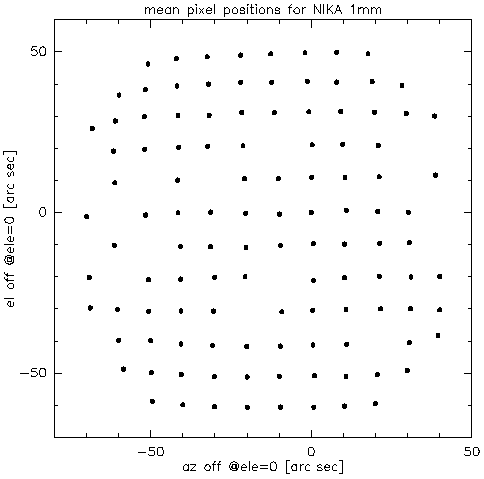
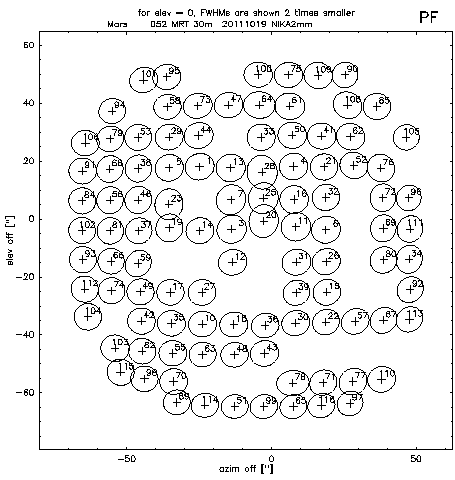
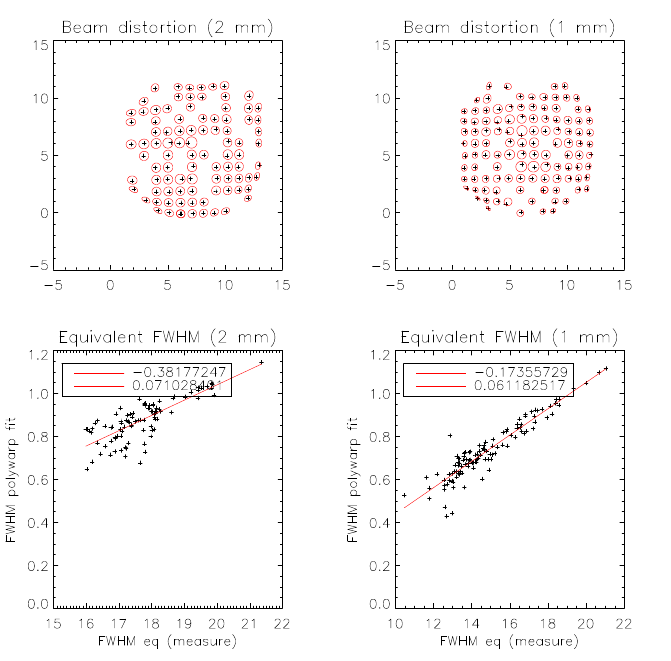
The focal plane distortion affects the beams in a correlated fashion with the Focal Plane Geometry distortion. This points towards a general optical distortion common to both detectors (an optical element is misplaced in the optical train).
Glitches and Mars plateau
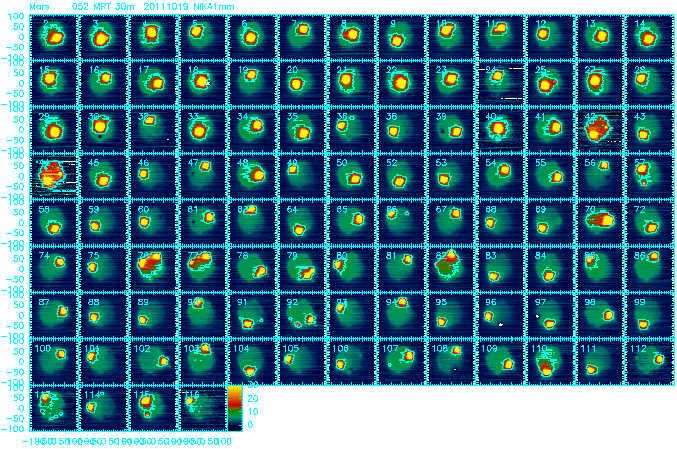
Cosmetics
rms of maps per scan per kid per beam averaged over 5 scans
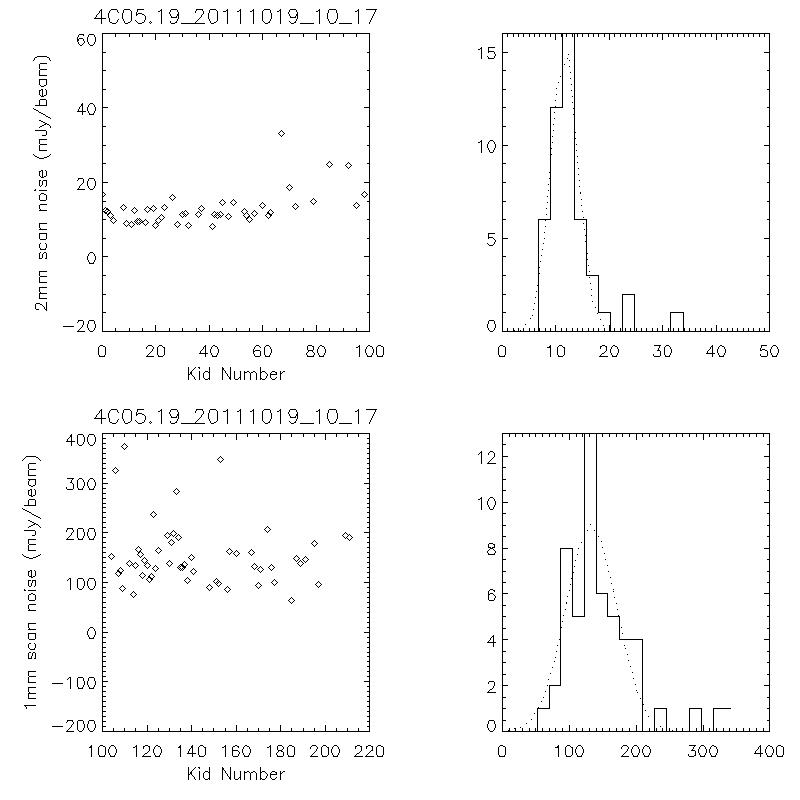
Photometry
Evolution of the sky opacity during Run#3

Absolute photometry
Using pointing sources (mostly quasars), we compare the absolute flux measured with NIKA run3 with an estimate obtained using PdB measurements. The summary of the photometry is given here as a spreadsheet and in this figure:
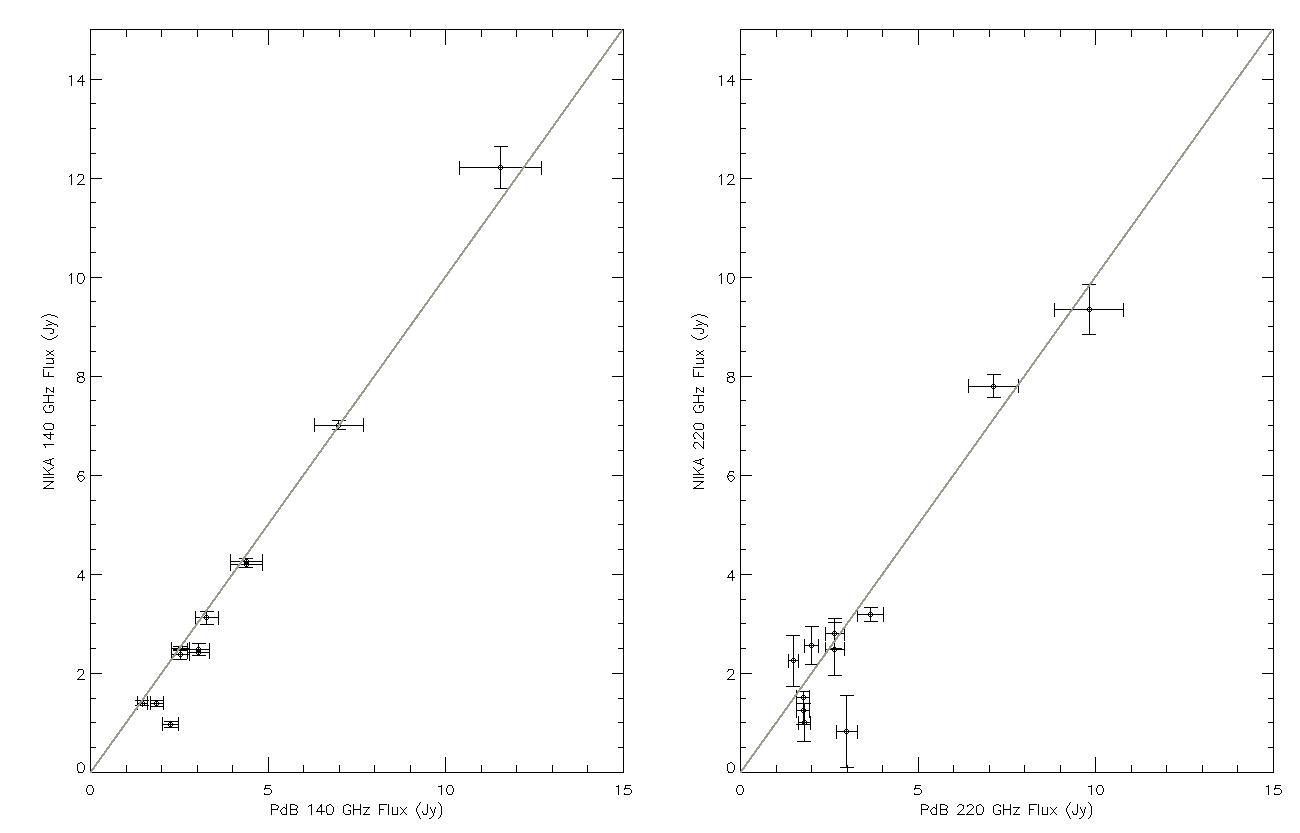
The agreement is reasonable with the fluxes covering from 1.5 to 15 Jy.
